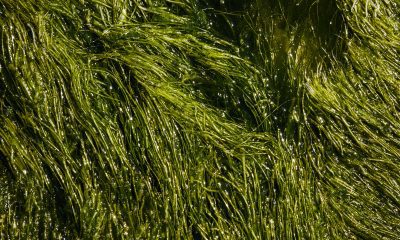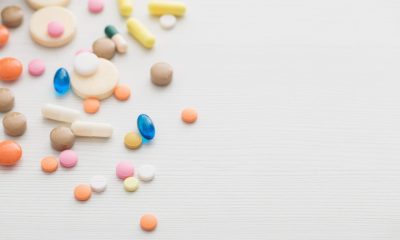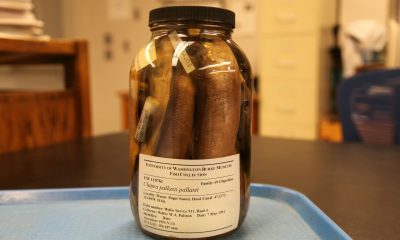How humans became tolerant of dairy
The team mapped patterns of milk use over the last 9,000 years
Published
2 years ago onBy
Talker News
By Gwyn Wright via SWNS
People built up tolerance to milk and dairy during famines and outbreaks of disease thousands of years ago, according to a new study.
Our ancestors were drinking milk long before a gene mutation that allows us to tolerate lactose, say scientists.
They said our descendants would have been more likely to drink unfermented, high-lactose milk when their crops had failed, exactly when they shouldn’t.
Genes that give people lactose tolerance were under more pressure from natural selection when there was more famine and disease, the team found.
They say drinking milk at a time of poor sanitation, disease and famine led people to die. Those without lactose tolerance would have been especially vulnerable.
Eventually, many people who did not carry the gene mutation would have died before reproductive age, pushing up the percentage of people with the gene mutation.
It had been widely thought that people can tolerate lactose in order to consume more milk and dairy, but the new findings dispute that.
Most European adults can drink milk without any problems, but the same is not true for two-thirds of the world’s adults and almost everyone 5,000 years ago.
If we don’t digest lactose, which is a sugar, properly it can cause cramps and diarrhea.
The research team found a gene mutation that enables people to tolerate milk and dairy was not widespread until around 1.000 BC although it was first detected between 4,700 and 4,600 BC.
Professor George Davey Smith, of the University of Bristol, said: “To digest lactose we need to produce the enzyme lactase in our gut.
“Almost all babies produce lactase, but in the majority of people globally, that production declines rapidly between weaning and adolescence.
“However, a genetic trait called lactase persistence has evolved multiple times over the last 10,000 years and spread in various milk-drinking populations in Europe, central and southern Asia, the Middle East and Africa.
“Today, around one-third of adults in the world are lactase persistent.”
The team, led by University of Bristol and University College London researchers, say milk and dairy tolerance became so widespread because of natural selection but it had not been clear why this process happened.
For the study, the team mapped patterns of milk use over the last 9,000 years, probed UK Biobank data about living Brits and combined ancient DNA, radiocarbon, and archaeological data using new computer models.
They assembled a huge database of almost 7,000 organic animal fat residues from more than 13,000 pieces of pottery from 554 archaeological sites to work out where and when people were drinking milk.
Milk was found to have been used widely in prehistoric Europe but its use rose and fell at different times.
They then assembled a database about the presence or absence of the gene mutation that allows people to tolerate lactose.
To do this they used published ancient DNA sequences from more than 1,700 prehistoric European and Asian people.
The mutation first appeared around 5,000 years ago and by 3,000 years ago it was more widespread. It is very common today.
Next, they used statistics to work out how well changes in milk use through time explain the fact people became tolerant of milk and dairy.
They found no relationship, even though they were able to show they could detect the link if it existed.
The surprising finding challenged the long-held view that people built up tolerance as they ate and drank more dairy and milk.
Facts and figures about 300,000 living Brits showed almost no difference in the amount of milk drunk by people with genes which suggest they are tolerant to the drink or not.
Drinking milk caused some discomfort but did not have short or long-term negative health effects on people who are lactose intolerant, according to the team.
Prof Davey Smith said: “Our findings show milk use was widespread in Europe for at least 9,000 years, and healthy humans, even those who are not lactase persistent, could happily consume milk without getting ill.
“However, drinking milk in lactase non-persistent individuals does lead to a high concentration of lactose in the intestine, which can draw fluid into the colon, and dehydration can result when this is combined with diarrhoeal disease.
“If you are healthy and lactase non-persistent, and you drink lots of milk, you may experience some discomfort, but you not going to die of it.
“However, if you are severely malnourished and have diarrhea, then you’ve got life-threatening problems.
“When their crops failed, prehistoric people would have been more likely to consume unfermented high-lactose milk – exactly when they shouldn’t.”
He added: “Our study demonstrates how, in later prehistory, as populations and settlement sizes grew, human health would have been increasingly impacted by poor sanitation and increasing diarrhoeal diseases, especially those of animal origin.
“Under these conditions consuming milk would have resulted in increasing death rates, with individuals lacking lactase persistence being especially vulnerable.
“This situation would have been further exacerbated under famine conditions when disease and malnutrition rates are increased.
“This would lead to individuals who did not carry a copy of the lactase persistence gene variant being more likely to die before or during their reproductive years, which would push the population prevalence of lactase persistence up.
“It seems the same factors that influence human mortality today drove the evolution of this amazing gene through prehistory.”
The findings were published in the journal Nature.
Stories and infographics by ‘Talker Research’ are available to download & ready to use. Stories and videos by ‘Talker News’ are managed by SWNS. To license content for editorial or commercial use and to see the full scope of SWNS content, please email [email protected] or submit an inquiry via our contact form.
You may like


How blood samples will be able to tell whether cancer patients will survive


Stroke deaths rising after plummeting for 40 years


New artificial pancreas could help Type 2 diabetes patients


How algae can help wounds heal quicker


Antibiotic residue in wastewater contributing to dangerous resistance


Warming oceans decimated sea parasites to damage environment
Other Stories


New breakthrough treatment boosts cancer-fighting cells
The approach involves activating the immune cells in the body and "reprogramming" them to attack and destroy the cancer cells.


One-year-old can’t stop laughing during first ride at Disneyland
"We didn't expect him to love it that much."


Dad running marathon wearing chainmail weighing over 40 pounds
A dad is attempting to break the world record for the fastest marathon while wearing chainmail.


Hero saves elderly couple by dragging them out of burning car
The Good Samaritan jumped into action after spotting the fire on his way to work.


Bomb squad seals off town after ammunition shell donated to charity shop
Staff discovered the device in a bag of donations.
Top Talkers

 Parenting2 days ago
Parenting2 days agoSingle mom details struggles of feeding her 12 kids

 Broadcast4 days ago
Broadcast4 days agoOver 40% of Americans have no clue what a 401k is

 Broadcast3 days ago
Broadcast3 days agoHow hard is it for Americans to live sustainably?

 Broadcast1 week ago
Broadcast1 week agoGrocery shopping hungry is costing Americans this much

 Funny1 week ago
Funny1 week agoCops confused by crow mimicking police siren

 Shopping1 week ago
Shopping1 week agoGrocery shopping hungry costs Americans this much every trip

 Money4 days ago
Money4 days agoOver 40% of Americans have no clue what a 401k is

 Parenting1 week ago
Parenting1 week agoIt takes this many minutes for the average American kid to get bored
